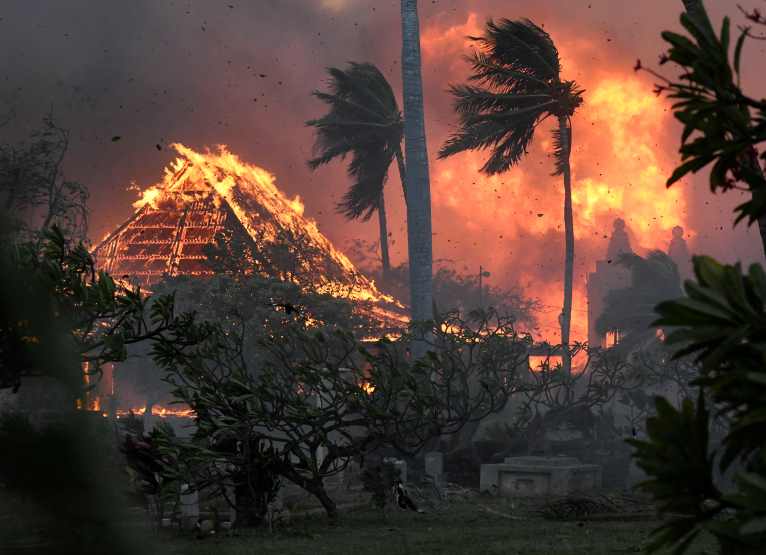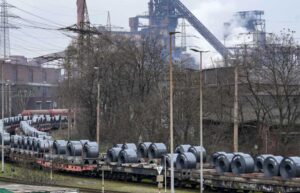LAKELAND, Fla. — As fires on Maui and Big Island continue to burn, the American Logistics Aid Network (ALAN) is gearing up to provide support — and calling on members of the logistics community to be on long-term alert for opportunities to do the same.
Effective immediately, the organization has expanded its Disaster Micro-Site to include key details about the fires and their related logistics needs.
Additionally, the organization received its first request for logistics assistance — moving communications equipment to support shelter facilities near Lahaina.
“We are heartbroken and devastated for the residents of both islands, especially those who have lost a loved one, a home or — in the case of Lahaina — most of their hometown,” said ALAN Executive Director Kathy Fulton. “Today we are officially channeling that heartbreak into action. Although the need for our supply chain assistance for post-fire relief efforts in Hawai’i hasn’t been extensive yet.”
Fulton added that as assessments are made, “we’ll undoubtedly be getting more requests, including many that could come in several weeks or months down the road. That’s why we hope members of the logistics community will visit our Disaster Micro-Site often to view the latest lists of requests — or consider making a pre-offer of any space, services and equipment they’d be willing to donate to assist with fire relief efforts.”
Fulton also reiterated a request from many members of the non-profit relief community: Please don’t self-deploy to Maui or Big Island, and refrain from participating in product collection drives.
“Although the intention behind these efforts is good, they often create more challenges than they solve, including getting in the way of rescue efforts. So please don’t add to an already difficult situation,” she said. “If you truly wish to help, send funds. Cash donations allow non-profits to buy what they need, when and where they need it. And that will help survivors faster.”
Fueled, in part, by Hurricane Dora’s strong offshore winds, the fires on Maui have claimed 36 lives and destroyed more than 271 structures, many of which were in the historic town of Lahaina.
“This devastating disaster is a good example of just how unpredictable hurricanes and their impacts can be,” Fulton said. “However, I hope that — like other recent disasters we’ve been working on — it will also serve as an example of just how generous the logistics community can be, because the donated transportation, warehousing, shipping supplies, forklifts and logistics expertise we provide can truly be game-changers and make a considerable difference for disaster survivors.”
Lahaina holds deep cultural significance for Hawaiians. The city was once the royal residence of King Kamehameha III, who unified Hawaii under a single kingdom by defeating the other islands’ chiefs. His successors made it the capital from 1820 to 1845, according to the National Park Service.
Kings and queens are buried in the graveyard of the 200-year-old stone Wainee Church. Later named Waiola, the church that once sat up to 200 people was photographed apparently engulfed in flames this week.
“It was really the political center for Hawaii,” said Davianna McGregor, a retired professor of ethnic studies at the University of Hawaii at Manoa.
Dozens of people were killed and hundreds of structures were damaged or destroyed in the blaze that ignited Tuesday and quickly spread throughout the western Maui community of less than 13,000 residents.
It’s feared that the fire also consumed much of Lahaina’s historic Front Street, home to restaurants, bars, stores and what is believed to be the United States’ largest banyan, a fig tree with roots that grow out of branches and eventually reach the soil like new trunks.
Richard Olsten, a helicopter pilot with tour operator Air Maui, said he and other pilots and mechanics flew over the scene Wednesday before work to take stock.
“All the places that are tourist areas, that are Hawaiian history, are gone, and that can’t be replaced,” he said. “You can’t refurbish a building that’s just ashes now. It can’t be rebuilt — it’s gone forever.”
Francine Hollinger, a 66-year-old Native Hawaiian, said witnessing the destruction of Front Street was “like losing a family member … because they’ll never be able to rebuild it, like we wouldn’t be able to bring back our mother or father.”
The full extent of loss won’t be known until officials can assess the damage done by the flames, fanned by winds caused in part by Hurricane Dora moving westward hundreds of miles to the south of the island state.
The Lahaina Historic District is home to more than 60 historic sites, according to the Advisory Council on Historic Preservation. A National Historic Landmark since 1962, it encompasses more than 16,000 acres (6,500 hectares) and covers ocean waters stretching a mile (1.6 kilometers) offshore from the storied buildings.
For Native Hawaiians, the city is a connection to their ancestors. Lahainaluna High School was where royalty and chiefs were educated, and also where Kamehameha and his Council of Chiefs drafted the first Declaration of Rights of the People and the Constitution for the Hawaiian Kingdom.
“From going from an absolute monarchy to a constitutional monarchy, the ruling chiefs in and around Lahaina and those educated at Lahainaluna played very prominent roles in our governance at that time,” McGregor said.
The capital was moved to Honolulu in 1845, but Lahaina’s palace remained a place where royalty would visit.
Lahaina also has a rich history of whaling, with more than 400 ships a year visiting for weeks at a time in the 1850s. Crew members sometimes clashed with missionaries on the island.
Sugar plantations and fishing boosted the economy over the decades, but tourism is the main driver now. Nearly 3 million visitors came to Maui last year, and many of them come to the historic city.
The fire is “just going to change everything,” said Lee Imada, who worked at the Maui News for 39 years, including the last eight as managing editor until his retirement in 2020. “It’s just hard to register, even right now, what the full impact of this is going to be.”
Imada lives in Waikapu, on Maui, but has ancestral ties to Lahaina going back generations. His mother’s family owned a chain of popular general stores, and his granduncles ran the location on Front Street until it closed around 60 years ago.
He recalled walking down Front Street among the tourists as they shopped or ate, looking at the banyan tree, and enjoying the beautiful ocean views from the harbor.
“It’s just sort of hard to believe that it’s not there,” Imada said. “Everything that I remember the place to be is not there anymore.”
The Associated Press contributed to this report.
The Trucker News Staff produces engaging content for not only TheTrucker.com, but also The Trucker Newspaper, which has been serving the trucking industry for more than 30 years. With a focus on drivers, the Trucker News Staff aims to provide relevant, objective content pertaining to the trucking segment of the transportation industry. The Trucker News Staff is based in Little Rock, Arkansas.








